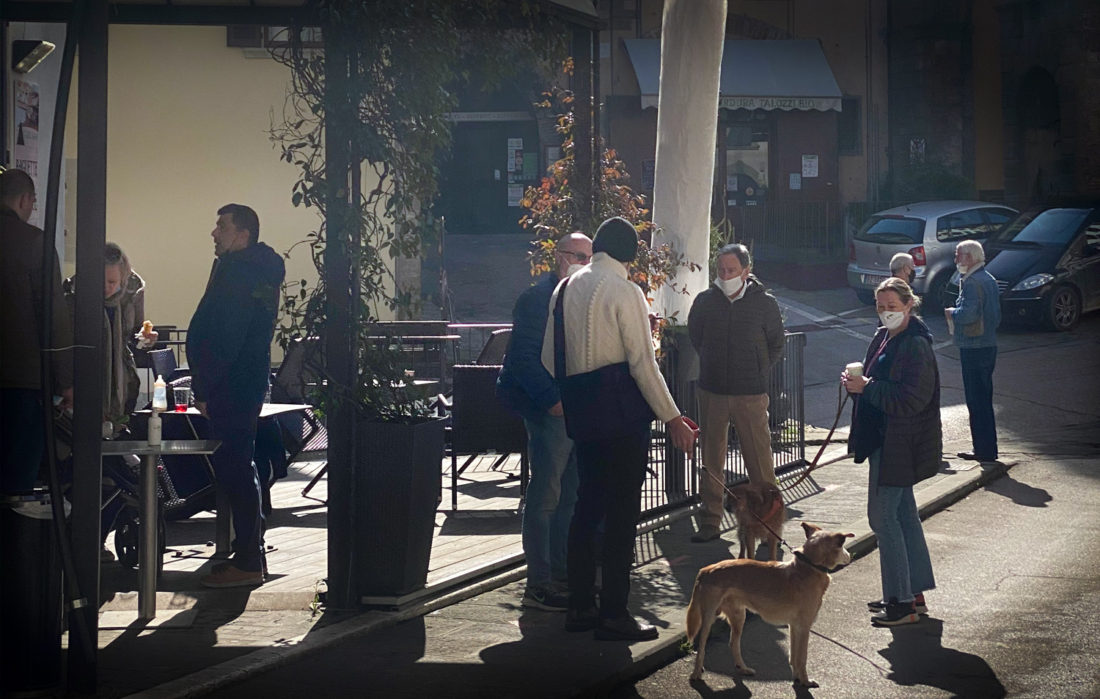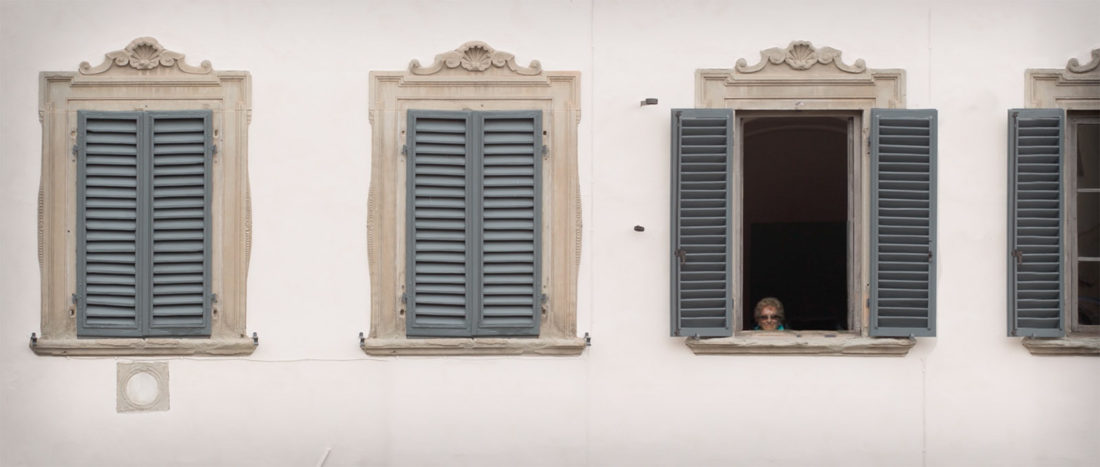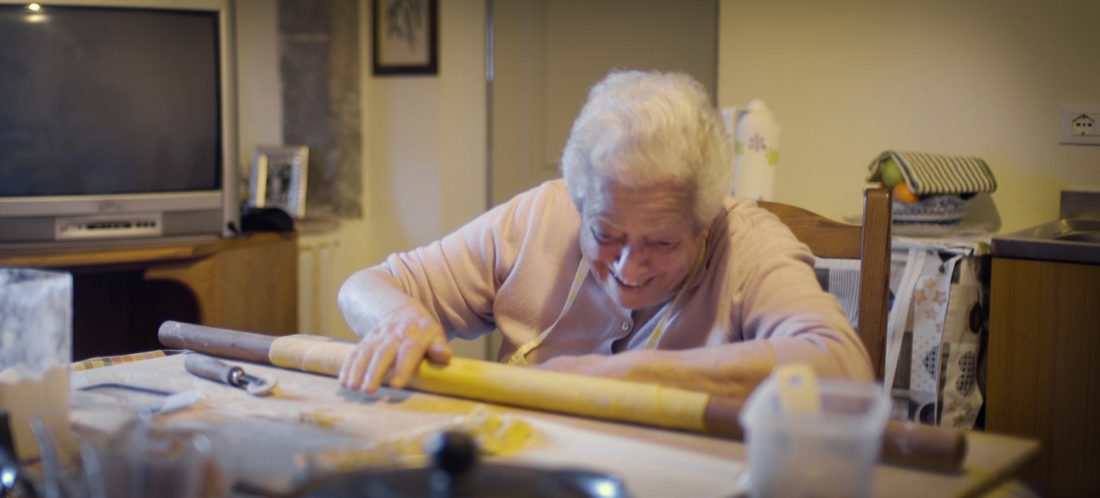Live to be 100
The Beast From The East II weather front just roared through bringing some real cold to the valley — on a couple of nights temperatures were down to -7°C (19°F). John was up early one morning and noticed one of our elderly neighbors walking up the hill to town, despite the ice and strong wind. John mentioned it to me and said that he was surprised to see him out, braving the cold, but I wasn’t puzzled. A more important need was calling, something that weather and a pandemic can’t suppress — coffee with friends.
Groups gather throughout the day at the cafes. Current restrictions dictate that cafes are only open for takeout so people stand outside, holding tiny paper cups with a shot of espresso, and try to drink while pulling aside their masks the minimal amount possible. But mainly they talk and laugh, exchanging gossip, news, and complaints. When my favorite cafe is allowed to serve inside a group of older men gather in a back room to smoke, play cards, and bet. It’s a room stained dark with smoke, but also mystery and intrigue. I hesitate to enter it even when they aren’t present as it feels like I am trespassing.
Teens hang less at the cafes and more in the pedestrian tunnel that runs through the foundations of the tower on the wall, complete with the town’s ancient water well. They are often smoking, mostly tobacco but sometimes pot, and seem unable to keep their tough teen personas intact faced with a “buon giorno”, answering with a smile. If I squint I can easily see them in sixty years, still together.
If not outside a cafe, the old men gather under the portico near the ATM. This spot is most crowded on market day, every Wednesday morning, and on Sunday morning when they get kicked out of the house so that Sunday lunch can be prepared. Most have known each other since school days and still have much to say to each other.
To socialize this much you have to get to where the gang is. Our neighbor is not alone in his frequent walking trips to the village, which although only a couple of hundred meters, is breath-catchingly steep. Our house is between town and the cemetery so we see the steady parade of older people going down the hill and back up for their daily visits to the graves. The elderly who live in the historic center navigate cobblestones, tiny staircases in the houses, and steep streets. They walk to stores and the pharmacy; most of their needs are met within meters. I marvel at their mobility after growing up in the states where there seems to be a universal acceptance that after a certain age one needs to move to, as Mom’s retirement community euphemistically called it, a “level-in”.
After being here nearly ten years I credit these two things, the insatiable desire to socialize and frequent walking that requires stamina and balance, with the vitality and spark that I see in the older people. Not to mention that only Japan’s population lives longer. I aspire to age like this and will try to follow their graceful lead.








